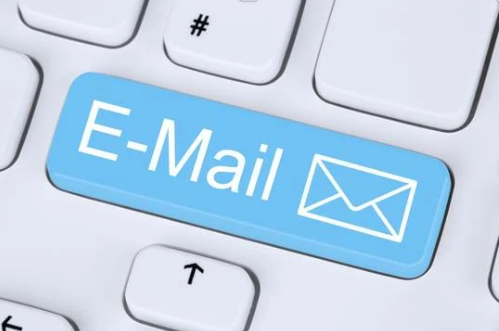Email Marketing for Affiliate Marketers
...tactics to close successful conversions
AFFILIATE METHODS
1/7/20256 min read


I am going to apologize in advance if I get a bit lengthy on this subject. There is a reason we have a section dedicated to articles in the topic of email marketing.
Being that I came from the direct marketing days of old, I recognize the significance and effectiveness of marketing directly to the consumer with no distractions. In the old days that meant a physical mail box. These days this means email. The value in your business is in your list.
Email marketing remains one of the most effective methods for affiliate marketers to generate conversions. Despite the rise of social media, paid ads, and other marketing tactics, email marketing has maintained its reputation for driving high ROI (return on investment).
Affiliate marketers can harness the power of email marketing by strategically nurturing leads, providing value, and promoting products in a way that drives sales. However, the key to success is in how you approach each email, what tactics you employ, and how you create an experience that leads your subscribers to take action.
In this article, we’ll explore key email marketing tactics affiliate marketers use to close successful conversions and maximize affiliate sales.
1. Build a Targeted and Engaged Email List
The first and most crucial step in email marketing for affiliate marketing is building a targeted list. While email lists can be bought or rented, these often lack the engagement necessary to make real conversions. For affiliate marketers, a high-quality, targeted list is everything.
Why This Matters:
Subscribers who have opted into your list are already interested in what you have to offer. Whether through a free lead magnet (eBook, checklist, webinar, etc.), content upgrades, or special offers, your goal is to attract individuals who are likely to be interested in the products you’re promoting.
How to Build a Targeted List:
- Use Lead Magnets: Offer valuable content that resonates with your audience’s needs in exchange for their email addresses. Ensure the lead magnet is closely aligned with the products you’ll later promote.
- Create Landing Pages: Design high-converting landing pages that clearly communicate the value of your offer. Ensure your opt-in forms are visible and persuasive.
- Segment Your List: Create different email lists based on interests or behaviors (e.g., those who downloaded an eBook vs. those who attended a webinar). This segmentation helps you send highly targeted emails to specific groups.
2. Craft Compelling Subject Lines
Your subject line is the first impression your subscribers have of your email. If it doesn’t grab their attention, they’ll never open your email. The subject line is a critical element in increasing your open rates and setting the stage for your affiliate product promotion.
Why This Matters:
A compelling subject line sparks curiosity, promises value, and encourages the reader to open the email. It plays a direct role in whether the subscriber will continue reading and take action.
How to Write High-Converting Subject Lines:
- Create Urgency or Scarcity: Use phrases like "Last chance," "Only a few left," or "Limited time offer" to create a sense of urgency.
- Offer Value: Focus on what your subscriber will gain from opening the email. For example, “Unlock Your Exclusive 20% Discount” or “Get More Done with This Productivity Tool.”
- Use Personalization: Including the subscriber’s name in the subject line can boost open rates, such as “John, this productivity tool is for you!”
3. Develop a Strong Relationship with Your Subscribers
Building trust and nurturing a relationship with your email list is essential. In affiliate marketing, it’s critical to view your subscribers not just as leads to convert, but as individuals with whom you can build rapport. People don’t buy from strangers—they buy from people they trust.
Why This Matters:
Subscribers are more likely to purchase products if they have an emotional connection with you and see you as a credible authority. When you’re perceived as helpful and authentic, your product recommendations are seen as genuine.
How to Build Relationships:
- Send Welcome Emails: Start with a friendly, welcoming message when someone subscribes to your list. Introduce yourself and share the value they can expect from your emails.
- Provide Consistent Value: Consistently send valuable, informative content that helps your subscribers solve problems, even if it's not directly related to your affiliate promotions. Your goal is to become a trusted resource.
- Engage Personally: Respond to emails, ask for feedback, and make your subscribers feel heard. This personal interaction strengthens the relationship.
4. Use Segmentation and Personalization
Not all of your subscribers will be interested in the same products. Effective affiliate marketers use segmentation and personalization to ensure that they are sending the right product recommendations to the right people at the right time.
Why This Matters:
Segmentation ensures that your email content is relevant to your readers. It also allows you to create more personalized offers that are more likely to resonate and convert. Personalized emails tend to have higher open and click-through rates.
How to Use Segmentation and Personalization:
- Segment by Interests: Divide your email list based on behaviors, preferences, or interests. For example, if you promote a range of products—such as digital marketing tools and fitness equipment—you can segment your audience based on which type of content they’ve interacted with.
- Use Dynamic Content: Dynamic content is tailored to the individual reader based on their preferences or behavior. For instance, a subscriber who clicked on an email link for fitness products should be sent more fitness-related emails.
- Personalize Product Recommendations: Use data to recommend products based on previous purchases or browsing behavior. This increases the likelihood that the product you’re promoting will resonate with the reader.
5. Write Persuasive Email Copy
The body of your email is where you make the case for why your subscribers should purchase the affiliate product you’re recommending. This is where you can influence your reader’s decision-making process, and it’s essential to write persuasive copy that convinces them to take action.
Why This Matters:
A well-written email does more than just inform—it persuades the reader to act. Your goal is to demonstrate the value of the product and show how it will help them solve a problem or achieve their goals.
How to Write Persuasive Email Copy:
- Focus on Benefits: Rather than simply listing the features of the product, emphasize the benefits—how the product will improve their life, solve a problem, or meet a need.
- Use Social Proof: Testimonials, case studies, or user reviews help validate the product and reassure the reader that others have had positive experiences with it.
- Highlight Scarcity: Limited-time offers, exclusive discounts, or low stock alerts create a sense of urgency, pushing subscribers to take immediate action.
- Clear Call to Action (CTA): Every email should have a clear, concise CTA. Use action-oriented language like “Get Yours Now” or “Claim Your Discount” to guide readers toward clicking your affiliate link.
6. Test and Optimize Your Campaigns
Email marketing isn’t a “set it and forget it” strategy. To maximize conversions, you must regularly test and optimize your email campaigns. A/B testing (split testing) is the key to determining what works best with your audience.
Why This Matters:
Small tweaks to your subject line, copy, or CTA can significantly impact open rates, click-through rates, and conversions. Testing helps you continuously improve and refine your email marketing strategy for higher conversions.
How to Test and Optimize:
- Test Subject Lines: Experiment with different types of subject lines, such as questions, urgency-driven lines, or personalized messages, to see which yields the highest open rates.
- A/B Test Email Copy: Try variations of your email copy (e.g., different product descriptions, calls to action, or social proof elements) to determine what resonates best with your audience.
- Monitor and Adjust: Regularly review your email metrics—open rates, click-through rates, conversion rates—and make adjustments based on the results. For example, if one email gets higher open rates but lower conversions, you may need to refine your call to action or offer.
7. Leverage Follow-Up Sequences
Email follow-ups are powerful for increasing conversions. After a subscriber has received an initial email promoting an affiliate product, follow-up emails can remind them of the product, offer additional information, and reinforce why it’s a great choice.
Why This Matters:
People often need several touchpoints with a product before they’re ready to buy. Follow-up emails increase the chances that subscribers will take action and convert, especially when timed effectively.
How to Create Effective Follow-Up Sequences:
- Send Reminder Emails: A couple of days after your first email, send a follow-up email reminding them of the product. Include additional testimonials, benefits, or a special discount.
- Offer Additional Resources: Provide more value in your follow-ups, such as a case study, how-to guide, or comparison chart to help the reader make a decision.
- Create Urgency: In the final follow-up email, remind them of limited-time discounts, bonuses, or the product's scarcity to push for a quick decision.
Conclusion
Email marketing is one of the most effective ways to drive affiliate product conversions. By building a targeted list, creating strong relationships with your subscribers, using persuasive copy, and optimizing your campaigns, you can significantly increase the likelihood of closing successful sales.
Testing and refining your strategy will help ensure your email marketing campaigns are continuously improving and delivering higher conversions, ultimately boosting your affiliate marketing success.
Since the 90's I have been involved in direct response marketing and as I said earlier that used to mean the physical mailbox. The only thing tangible a digital marketing business actually owns is their list. That is yours and yours alone. It can not be effected by the ever changing algrythms of social media or SEO. Building a list should be your number 1 priority.
